
Anistratov Uilleann Pipes
Among all the instruments crafted at Anistratov Bagpipes, it is the Uilleann pipes that Alexander creates with the deepest passion and artistic inspiration — a natural result of his journey as a professional uilleann piper himself.
Each set is the result of meticulous craftsmanship and a refined artistic vision. Anistratov Uilleann Pipes are offered in Concert D as well as in “flat” C♯, C, or B pitches, accommodating both contemporary performers and traditional purists.
Clients may choose from a variety of configurations:
-
Practice Set – chanter, bag, and bellows
-
Half Set – practice set with main stock and three drones
-
¾ Set – half set with added tenor and baritone regulators
-
Full Set – chanter, drones, three regulators (including bass), bag, and bellows
Renowned for his artistry and meticulous craftsmanship, Alexander Anistratov has cultivated two signature design aesthetics, each reflecting a unique dialogue between tradition and innovation.
Filímeala
This design pays tribute to the refined elegance of early 20th-century uilleann pipes. Characterised by clean, classical turning lines and a restrained aesthetic, it distils what Alexander considers the most graceful and enduring features of historic instruments. The resulting silhouette is original in form yet timeless in proportion, delivering a tone of exceptional warmth and depth.
Smolach Ceoil
A more contemporary expression, this style draws inspiration from the sinuous lines of Baroque ornamentation, gently interwoven with the flowing intricacy of Art Nouveau. The convergence of these artistic movements gives rise to instruments that are both visually captivating and musically expressive.
While Alexander’s instruments are not direct reproductions of historic models, faithful replicas can be commissioned by special arrangement and are developed in close consultation with the client.
Each Anistratov Uilleann Pipes set is available in Standard, Premium, and Deluxe editions, differentiated by their level of ornamentation, choice of materials, and degree of acoustic refinement.
Every instrument is supplied as a fully realised model, complete with reeds, valves, and hand-formed metal components — each element bent, drawn, and shaped individually. Select parts may also feature hand engraving or intricate carving, rendering an already unique instrument truly one of a kind.
Chanters
In developing his Concert Pitch Uilleann chanters, Alexander Anistratov undertook an exhaustive study of the acoustical and structural characteristics of several historically significant instruments. Through meticulous measurements and comparative analysis of bores and reed configurations, he examined the work of revered makers such as Leo Rowsome, Dave Williams, and Alain Froment.
While each of these instruments carries undeniable merit, Alexander noted recurring intonational and tonal challenges that modern pipers frequently encounter. Among these are the tendency for C♯ to run sharp, an overpowering B in the first octave, and instability around the note E. Additionally, many of these chanters exhibit a general inclination to drift sharp in pitch during performance.
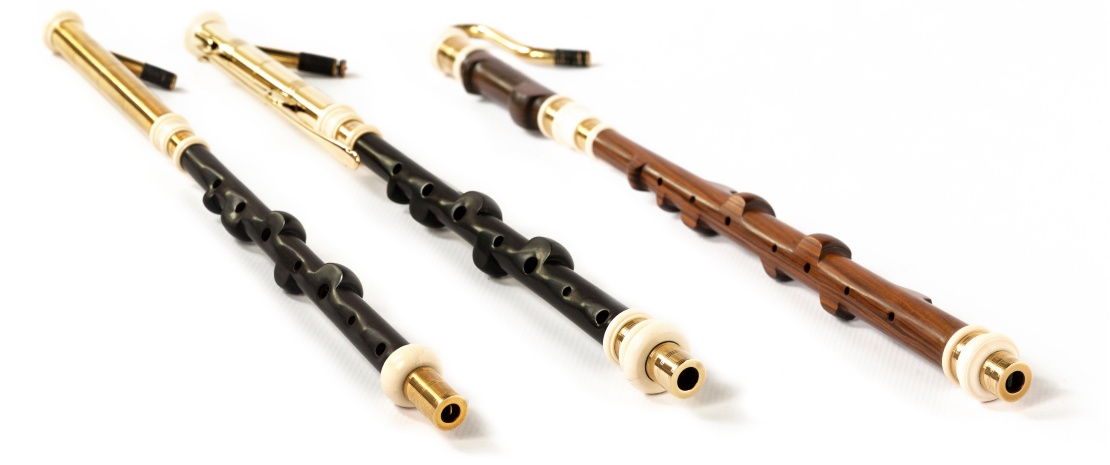
Uilleannpipes chanters in Ebony, Blackwood and Lignum Vitae
From left to right; concert D, concert D and B
In recent years, Alexander has also been developing a new wide bore chanter in C, intended to expand the tonal possibilities for pipers exploring “flat” pitch instruments. Remarkably, this C chanter has been engineered to accept the same reed used in the Concert D model, offering seamless playability and convenience for multi-instrument performers. This new model will be officially presented soon on our website and via our YouTube channel, accompanied by demonstrations and technical insights.
Every Anistratov chanter is a blend of acoustic engineering and artisanal expression, offering pipers an instrument that is not only technically refined, but capable of true musical eloquence.
Both Filímeala and Smólach Ceoil chanter models are designed with the discerning player in mind. Each features carefully executed scalloping of the fingerholes, an element not merely decorative, but fundamental in achieving accurate intonation and a refined, stable tone across both octaves. This attention to tactile contouring ensures not only tuning precision but also a natural, comfortable hand position—an extension of the player’s intent.
Where many traditional concert-pitch chanters struggle—with sharp C#s, overpowering first-octave Bs, and unstable Es—Anistratov's designs strive to resolve these historical inconsistencies. The result is a chanter that both honours its lineage and meets the exacting standards of the modern performer.
The Filímeala chanter speaks with a bold and sonorous voice—its tone rich, deep, and enveloping, with a dense, almost creamy texture. Designed with wide, tapered staples to complement its bore, it offers a lush harmonic presence ideal for expressive, legato playing.
In contrast, the Smólach Ceoil chanter is agile and articulate, with a crisp, vibrant timbre and clearly defined note separation. Its cylindrical staple design supports a more focused reed response, lending itself beautifully to intricate ornamentation and rhythmic phrasing.
Two voices. Two characters. Each a masterwork in its own right—crafted not only to be heard, but to be felt in the hand to be admired.
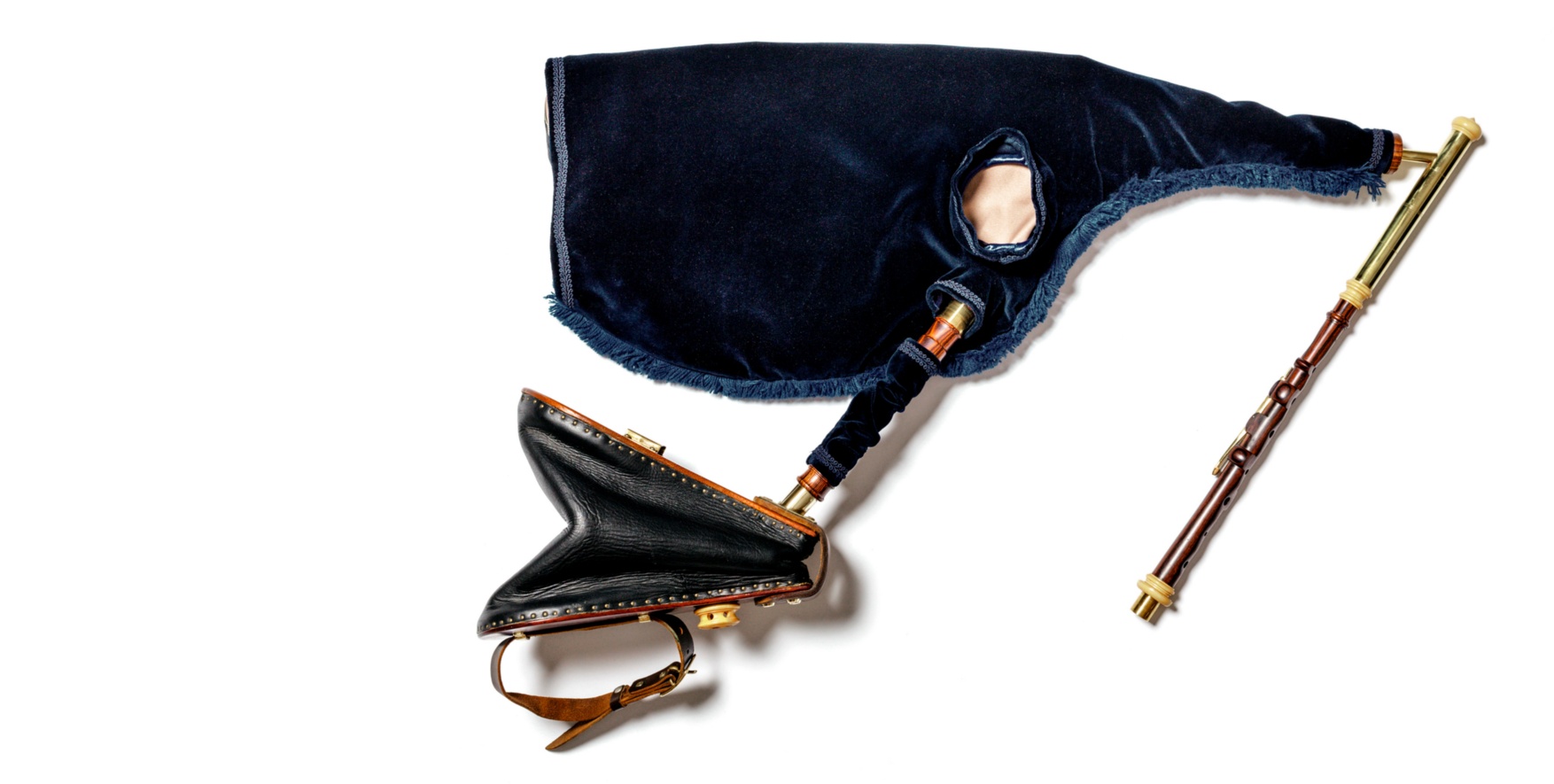
Filímeala model Uilleann pipes practice set in D.
Kingwood, Bronze, Boxwood.
Metal head, C nat key.
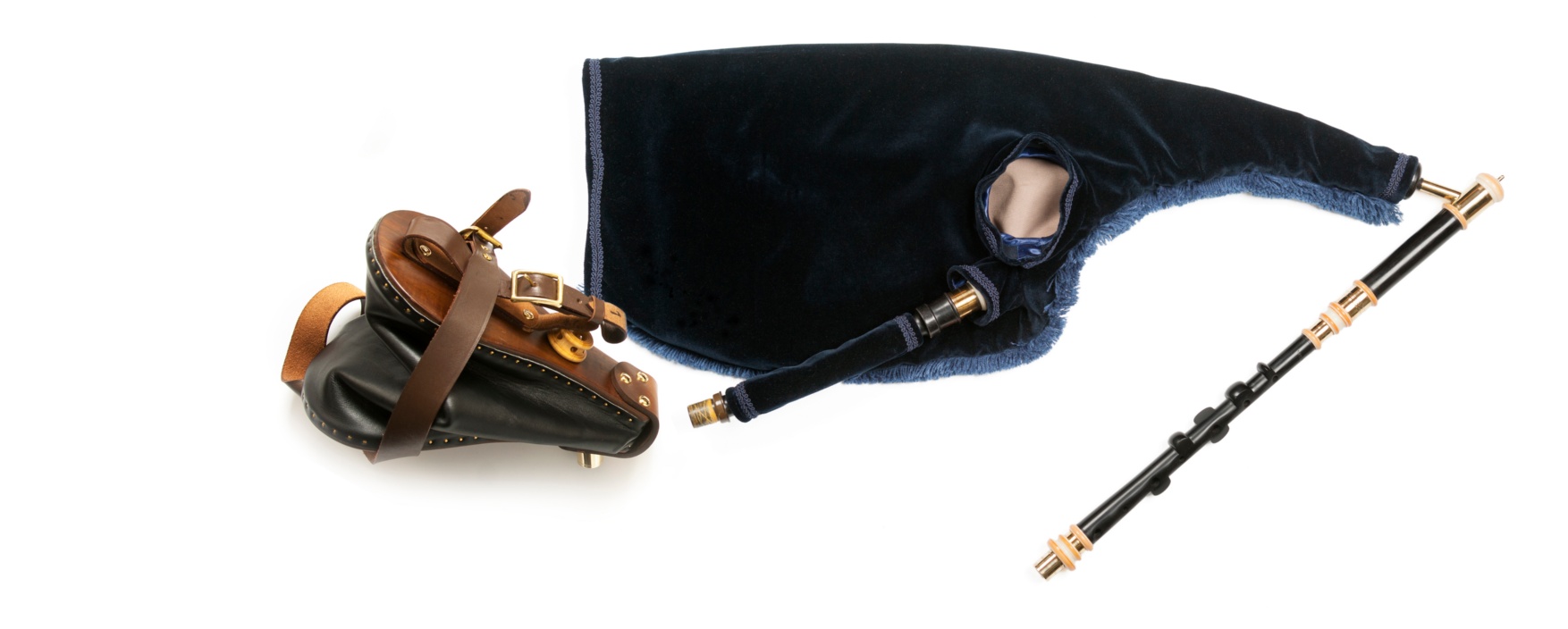
Filímeala model Uilleann pipes practice set in D.
Ebony, Bronze, Antiqued Art Ivory.
Wooden head.
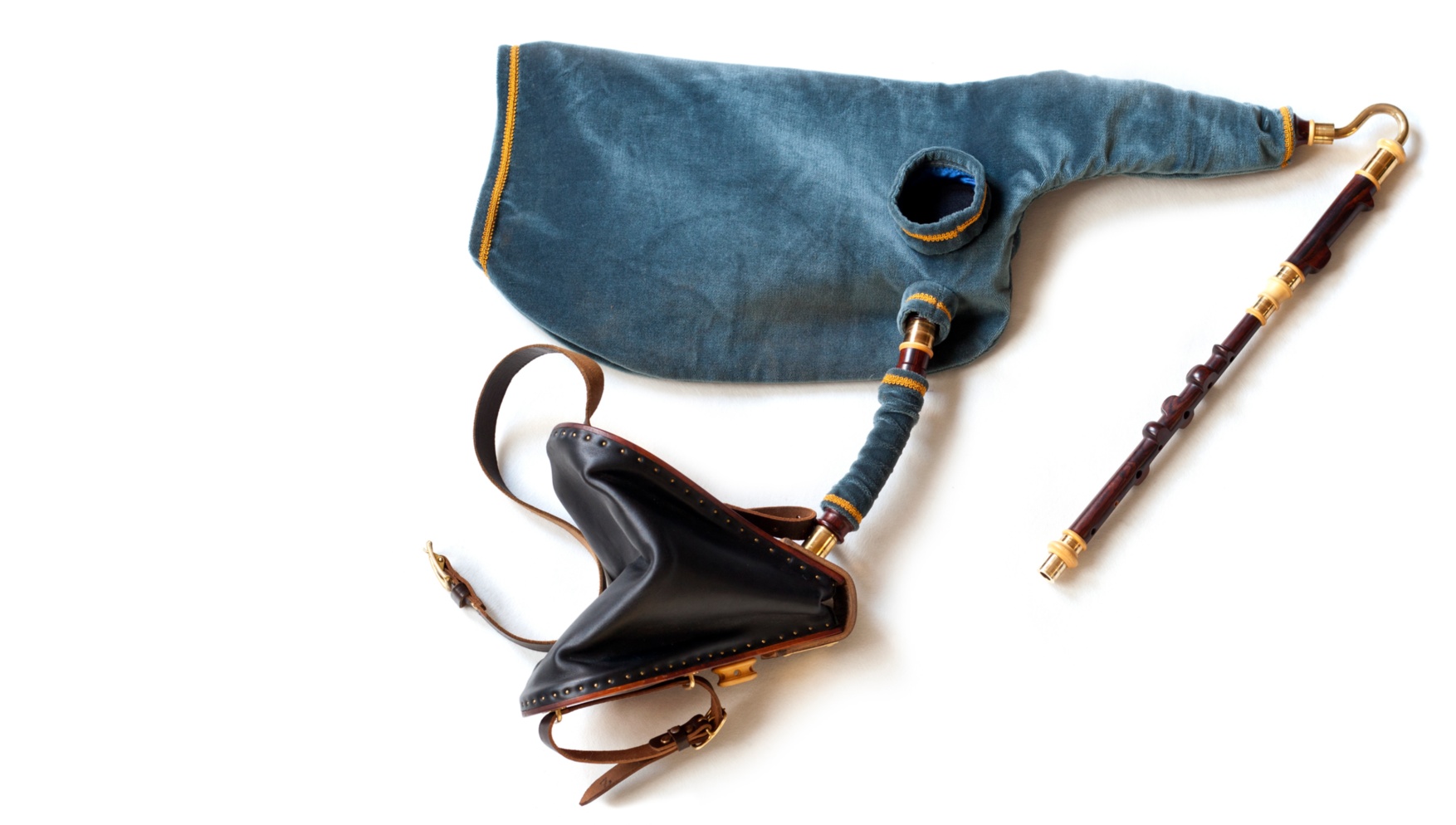
Smolach Ceoil model Uilleann pipes practice set in D.
Cocobolo, Bronze, Boxwood.
Wooden head, swan neck.
Chanter, Stop & Regulator keyes
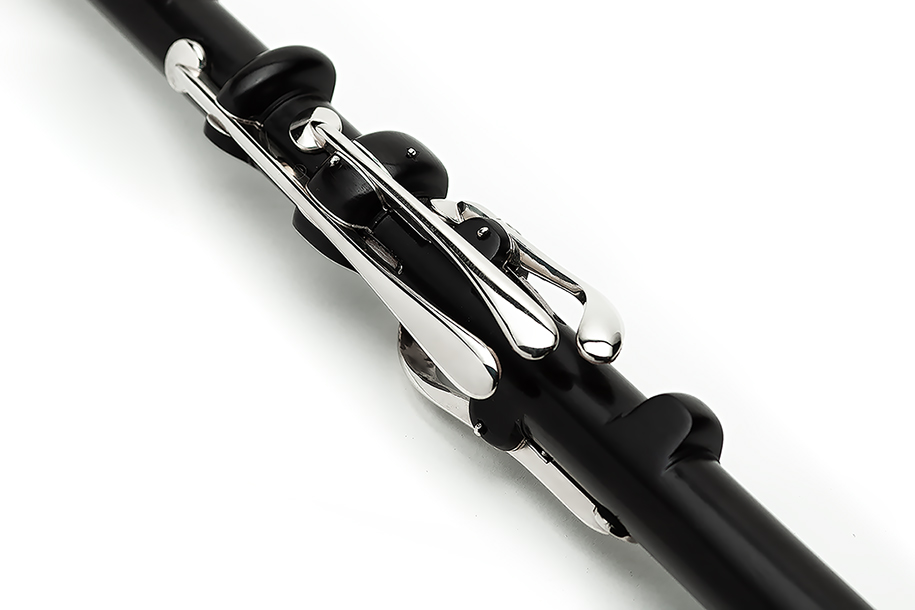
Chanter with Modern style keys in nickel silver. Every key is in the metal linned saddle. That chanter is four keyed (C natural, B flat, G sharp, F sharp)
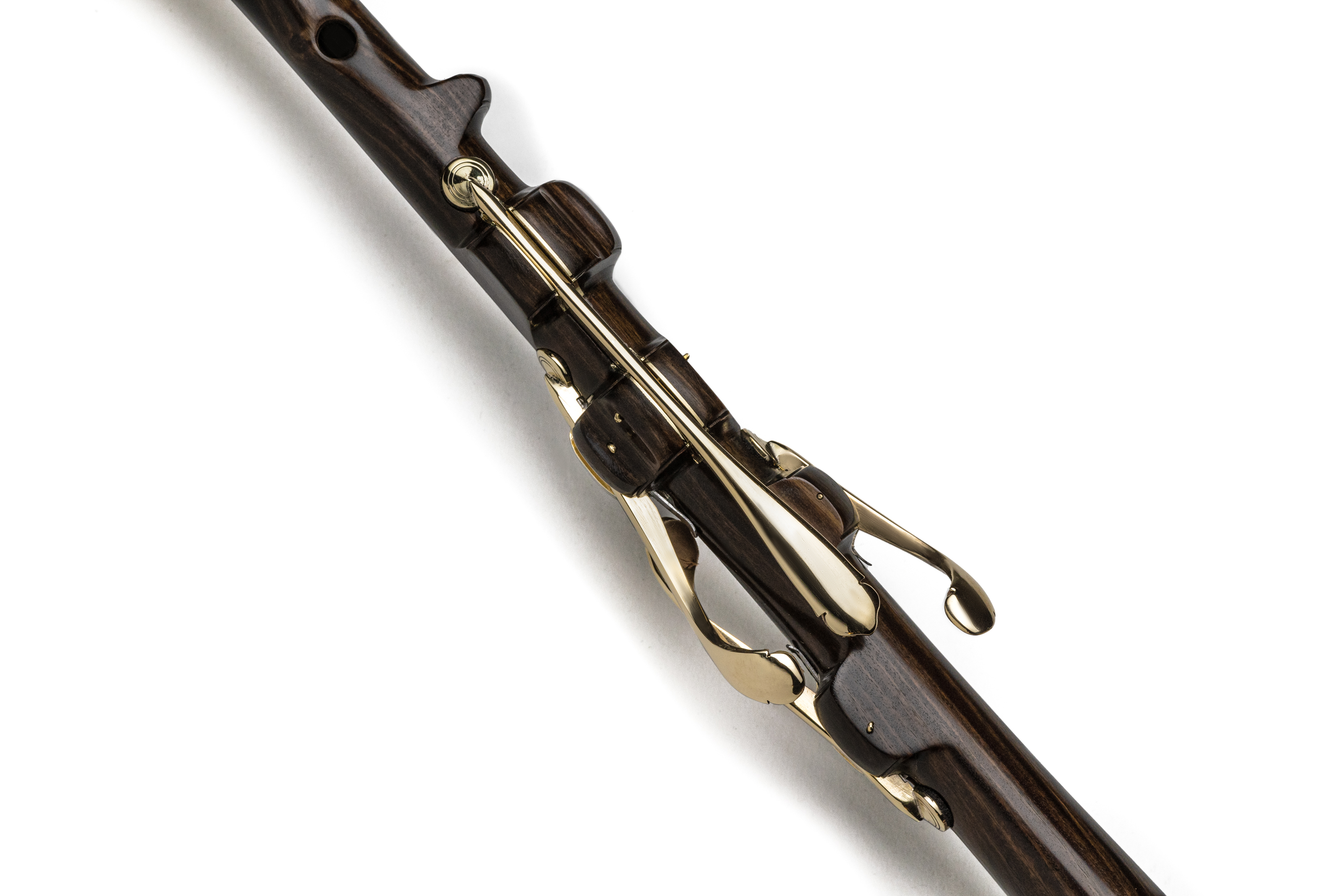
Chanter with Art Nouveau style keys in bronze. Every key is in the metal linned saddle. That chanter is four keyed( C natural, B flat, G sharp, F sharp)
Depending on the player’s requirements, from one to seven keyes bmay be added to a single chanter. Common configurations include C natural, F natural (long or short), G#, Bb, high D, and high E—enabling access to all chromatic semitones across two full octaves, right up to a bright, ringing high D. The sculptural quality of the keywork complements the visual harmony of the full set, and keys may be individually shaped to suit the hands of the performer—an essential option for those with smaller hands or rehabilitated injuries. Left-handed chanters are also available upon request, ensuring absolute accommodation to the player’s natural style.

Every Practice Set is furnished with a C natural key by default; Half Sets come with both C natural and the Chanter Stop Key; and the Full Sets are equipped as standard with C natural, F#, and Chanter Stop Key.
Of particular note is the Chanter Stop Key—a discreet yet essential addition to any serious piper’s toolkit. This mechanism allows the player to instantly and fully halt airflow to the chanter reed, silencing the melody pipe entirely. Such control is invaluable when tuning drones and regulators or during performance, where the piper may wish to let the drones resonate independently, without the presence of the chanter’s voice.
Equally refined is the Drone Stop Key system, which enables the full silencing or activation of all drones with a single gesture. On more advanced models, multiple Drone Stop Keys (two or even three) may be installed, allowing the player to engage additional interval drones selectively during play—expanding harmonic options without disrupting the musical flow.
Key saddles are optionally lined in bronze, nickel silver, or silver, enhancing both structural integrity and aesthetic refinement. Metal-lined saddles may abe specified as a bespoke option. Traditional leather pads or modern neoprene alternatives are available, depending on tonal preference and environmental conditions.
Each mechanical detail is executed with quiet mastery, always in service to the tone, the touch, and the musical imagination of the piper.
Drones
Anistratov Uilleann pipe drones follow the classic configuration of Bass, Baritone, and Tenor—a time-honoured trio tuned in octaves, such as D/d/D in a standard Concert D set. All three drones are housed securely within a common stock(or collector), designed to align the drone bores in a single ergonomic direction, offering both comfort and balance when playing seated or standing.
The common stock is fitted with a refined Drone Stop Key—a precisely engineered metal switch, operated effortlessly by a light wrist movement or a gentle press of the thumb. This allows the piper to engage or disengage the drones at will: to tune, to perform with only the chanter, or to add the drones gradually into the texture mid-set, enriching dynamic expression.
For those seeking expanded harmonic possibilities, interval drones can be added by request. These include a Baritone A/G drone, bridging the gap between tenor and standard baritone, and a Bass A/G drone, occupying the tonal space between the baritone and full bass. These optional voices offer deep, shifting harmonic colour—ideal for modal playing and drone-based compositions.
Further refinement is offered through the installation of tuning beads—a discreet mechanical addition to each drone, enabling the pitch to be raised by a whole tone with a single twist. For example, this allows a Concert D set to be played in E minor, with drones retuned seamlessly to E—a flexible solution for both traditional and contemporary repertoire.
All Anistratov drones come fitted with natural cane reeds as standard. However, Alexander also crafts his own composite drone reeds, combining a Blackwood body with a finely balanced cane tongue—available as an optional upgrade for those seeking stability across climates without sacrificing tonal warmth.
Every drone system is crafted with the same quiet attention to detail and unwavering commitment to tonal purity that defines the Anistratov name.
Chanter & Regulator Reeds — Precision at the Heart of the Tone
Among the many intricacies of Uilleann pipe making, none is as exacting or as vital as the crafting of the chanter reed. Indeed, it may well be the most complex double reed in the world. It must speak effortlessly across two full chromatic octaves, remain stable in dry playing conditions, and respond with clarity, warmth, and character. In short, the reed is not merely a component — it is the very soul of the instrument.
At Anistratov Bagpipes, Alexander approaches reed-making as a discipline in itself — a distillation of experience, patience, and acoustic understanding. Each chanter reed is formed from carefully selected, matured Arundo Donax cane. The crafting process, from first binding to final voicing within the chanter, takes from several days to several weeks, depending on the demands of the instrument and the temperament of the material. Perfection, in this case, is not optional — it is the starting point.
In our full Uilleann sets, great attention is also given to the making of regulator reeds. These reeds, though visually and functionally similar to chanter reeds, are uniquely engineered for each of the three regulators — Tenor, Baritone, and Bass. Each reed is crafted with its own distinct staple design, and made from cane of a different outer diameter than that used for the chanter, to ensure the proper pressure, timbre, and response required by the narrower bores of the regulators.
Together, the chanter and regulator reeds form a carefully balanced reed system — individually tuned, harmonically matched, and voiced to work in unison. Their making is not delegated or standardised: each reed is crafted, tested, and refined by hand, in-house, as part of the full Anistratov approach to uncompromising pipemaking.

Uilleann drones in Smolach Ceoil design-full mounted, tuning pins (U-bend bass drone)
Cocobolo, Bronze, Boxwood.
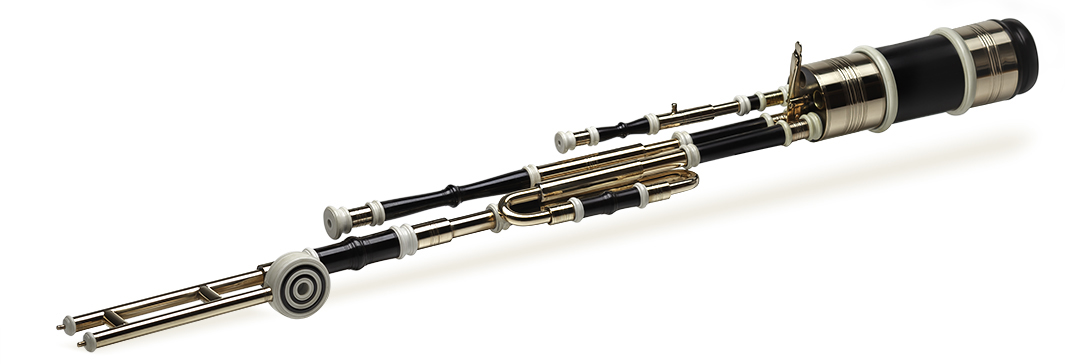
Uilleann drones in Filímeala Premuim design-full mounted, tuning pins, double mounts,
(H-bend bass drone)
Blackwood, Bronze, Mammoth Ivory.
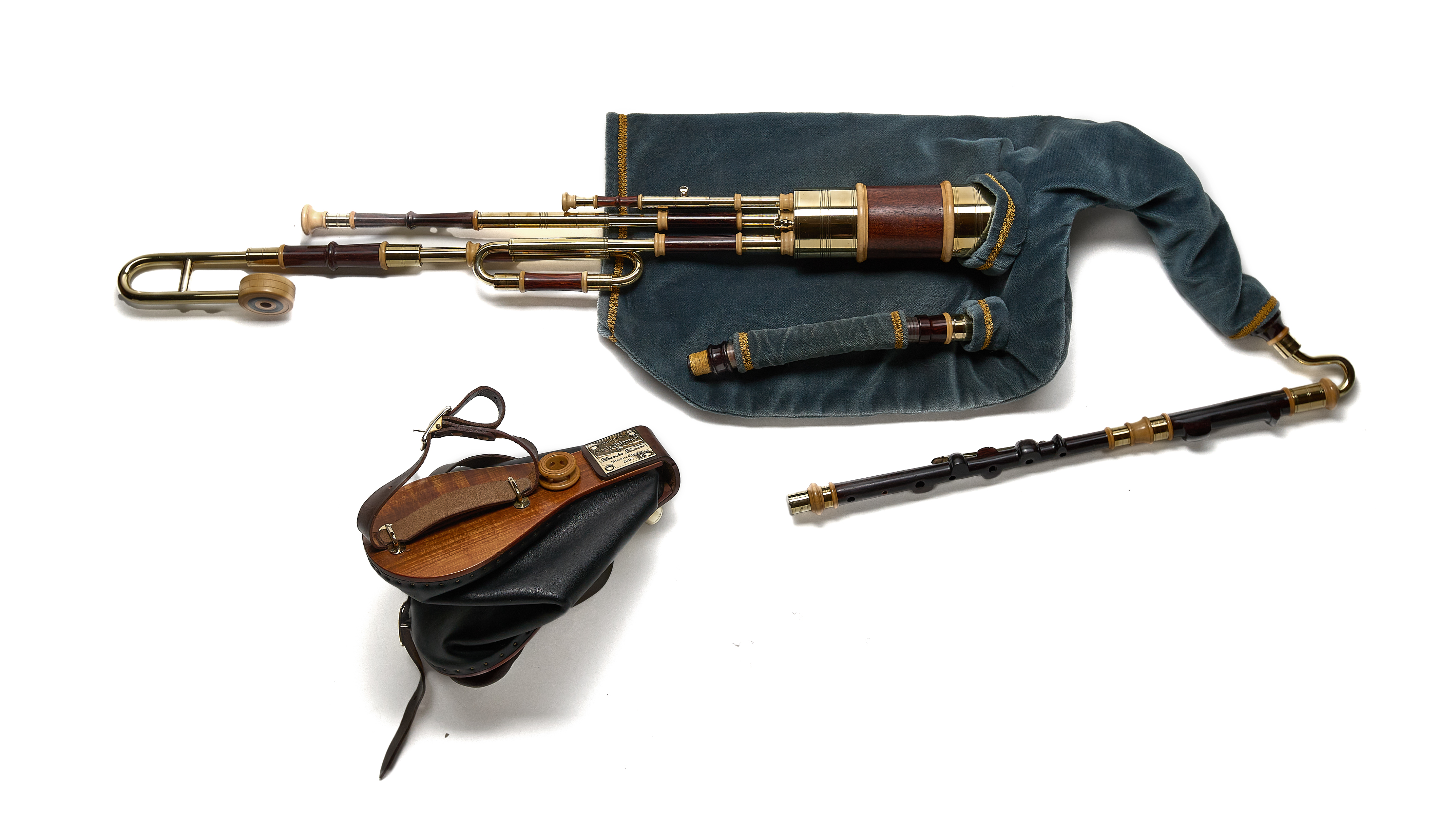
Smolach Ceoil model Uilleann pipes half set in D.
Cocobolo, Bronze, Boxwood.
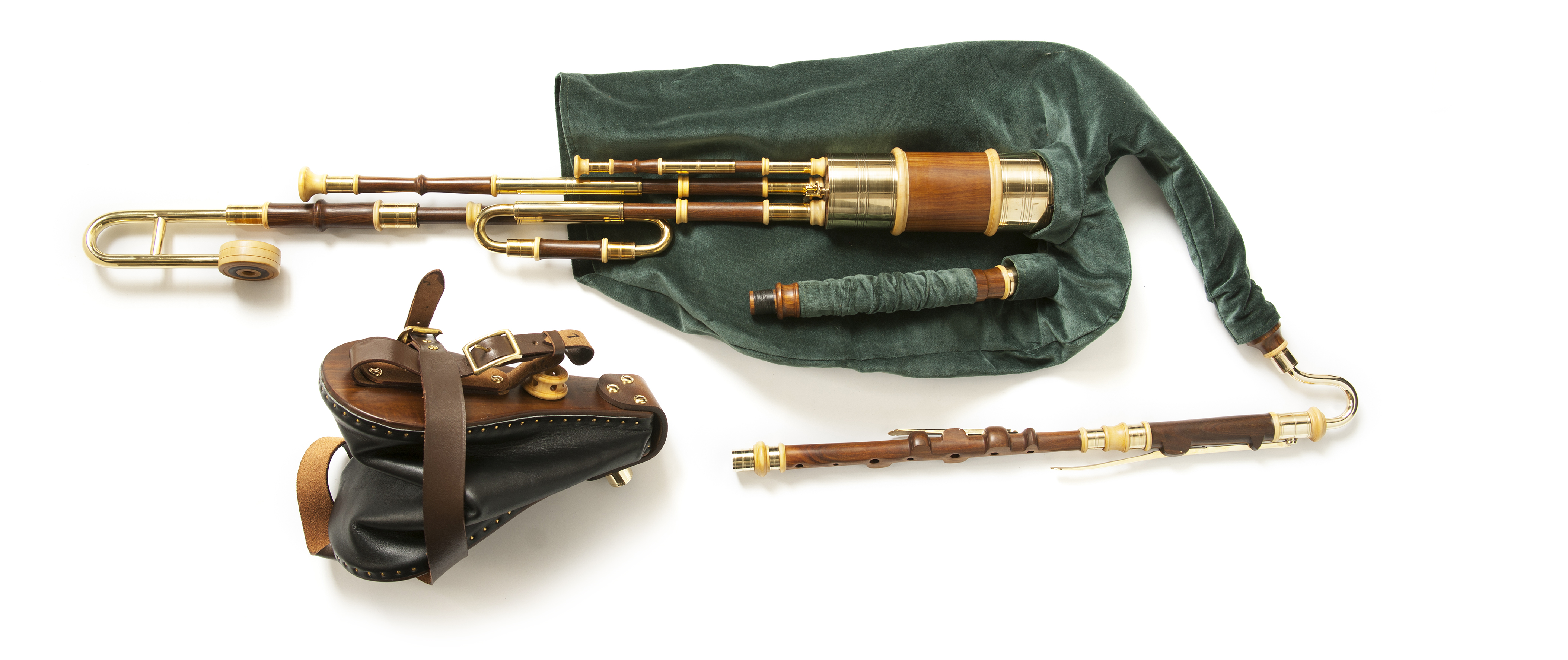
Smolach Ceoil model Uilleann pipes half set in D.
Lignum Vitae, Bronze, Boxwood
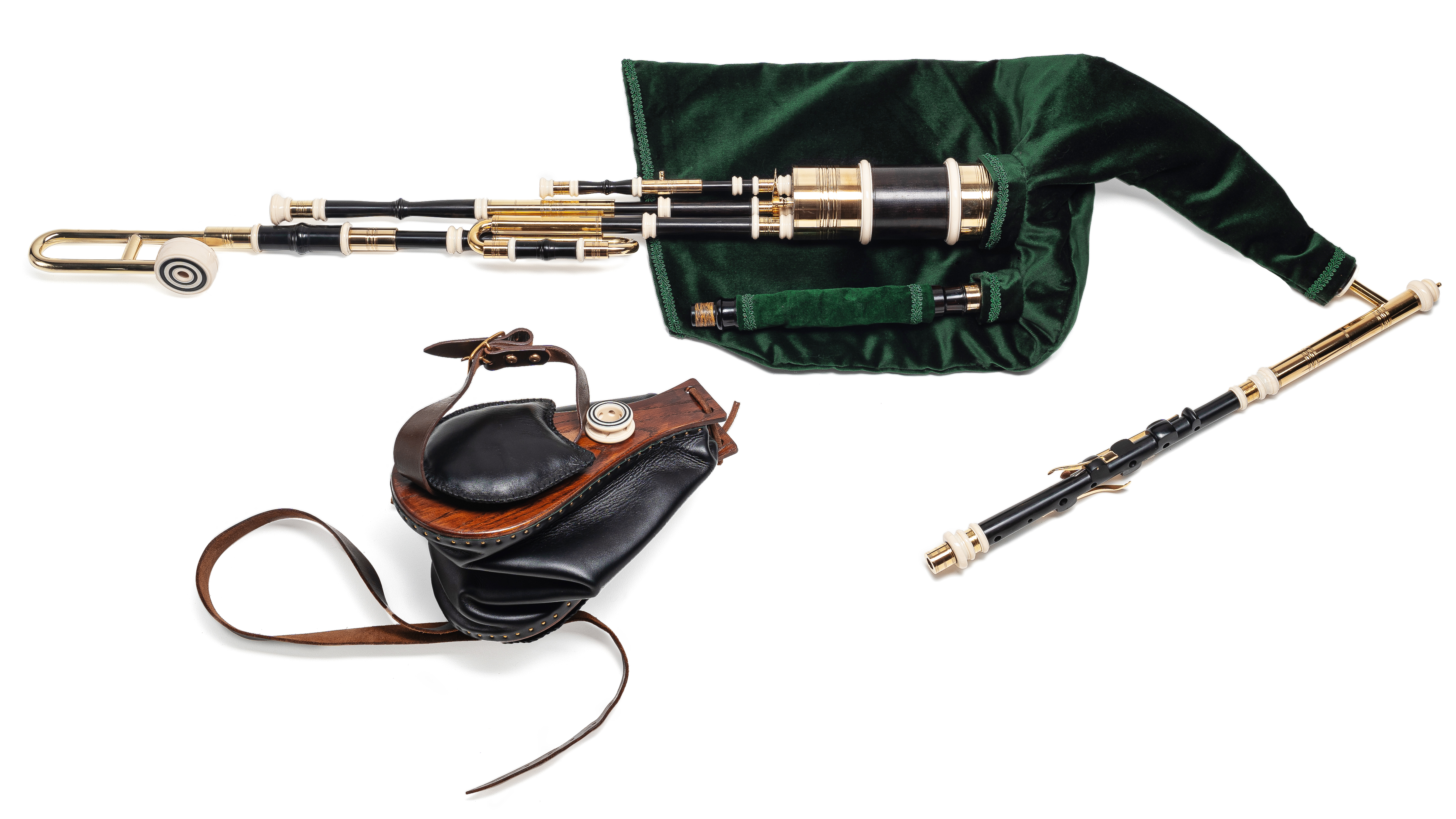
Filímeala standard model Uilleann pipes half set in D.
Blackwood, Bronze, Imitation ivory.
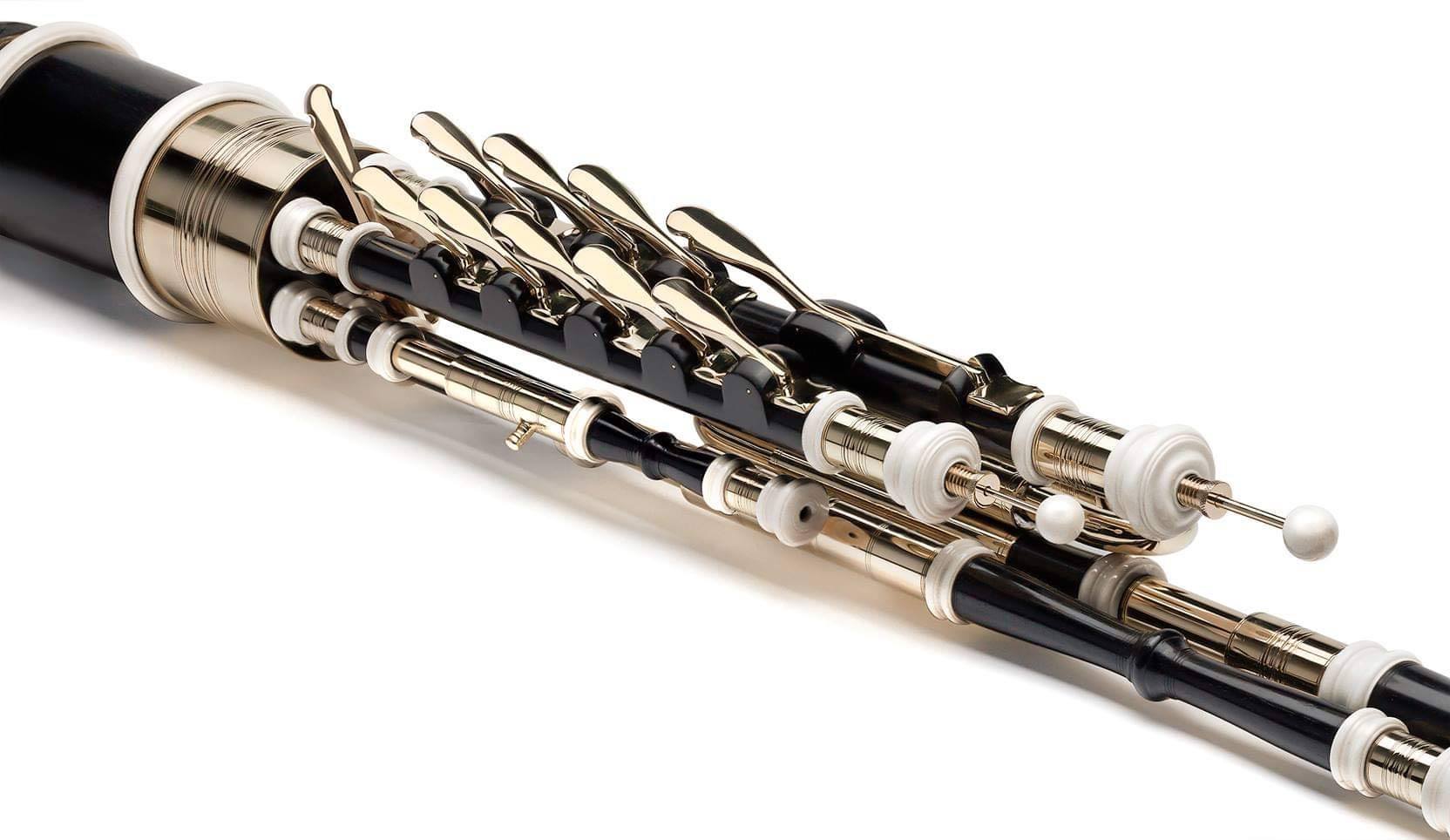
Filímeala Premuim model Uilleann pipes 3/4 set.
Two regulators (tenor and baritone) have baroque style keys in the metal lining saddles and "Viola da Gamba" shaped bodies.Both of the regulators has Fine tuning plungers besides tuning pins.
Regulators
The regulators crafted by Anistratov represent the very essence of the Uilleann pipes’ distinctive tonal character — a singular feature exclusive to this noble instrument. These elegantly engineered components, akin to auxiliary chanters, are designed to enhance the melodic line both harmonically and rhythmically.
Each regulator is fitted with finely balanced metal keys, which are subtly engaged by the wrist of the performer. When played, they emit rich, organ-like chords — a dignified accompaniment that elevates the melody with refined harmonic depth.
Our 3/4 sets are equipped with two regulators — tenor and baritone — offering a balanced and expressive harmonic range. The Full sets, for the discerning piper, feature three regulators: tenor, baritone, and bass, providing the complete spectrum of accompaniment.
For those seeking a further extension of expressive possibilities, an optional E regulator may be added to the Full set. This specialized piece, mounted in a separate, canon-like metal stock beneath the bass regulator, offers a singular E key, granting the performer additional harmonic nuance.
An additional regulator offering an E note (or its modal equivalent) extends the tonal palette and proves especially effective when paired with G, A, B, and C on the tenor regulator, thanks to its elongated key design. While this key affords expressive flexibility, it does present a mild intrusion upon the conventional regulator layout. Accordingly, the E regulator may be pivoted or repositioned to suit the player’s preferred ergonomic arrangement.
"I would say that the difference between Filímeala and Smolach Ceoil is same as the difference between Pratten flutes and Rudall & Rose".
Drone reeds
Drone Reeds — Tradition, Voiced by Hand
At Anistratov Bagpipes, the Uilleann pipes are approached as both an instrument and a legacy — each part crafted with reverence for tradition and an ear voiced tomodern musical demands.
A particular point of pride lies in our drone reeds, which are made entirely in-house using cane hand-harvested, sorted, and selected by Alexander Anistratov in the north of Italy. Each stalk is chosen for its density, fibre structure, and tonal potential. The cane is then seasoned, shaped, and tied using enduring techniques — forming reeds that offer a tone both deep and stable, steeped in the heritage of classic pipemaking.
For those seeking greater reliability in varied climates or performance settings, we offer composite drone reeds, combining hand-turned African blackwood bodies with natural cane tongues — a union of organic warmth and mechanical stability. Alternatively, our modern designs utilise ebonite bodies with precision-cut carbon fibre tongues, delivering exceptional consistency without sacrificing musicality.
Whether traditional or contemporary, each drone reed is the result of attentive craftsmanship and an unwavering respect for tradition, tempered by a clear-sighted pursuit of acoustic refinement. Every reed is individually voiced and tested by Alexander — not only to suit the instrument, but to serve the music.
To learn more about our materials and approach, visit the Reedmaking at Anistratov Bagpipes section.
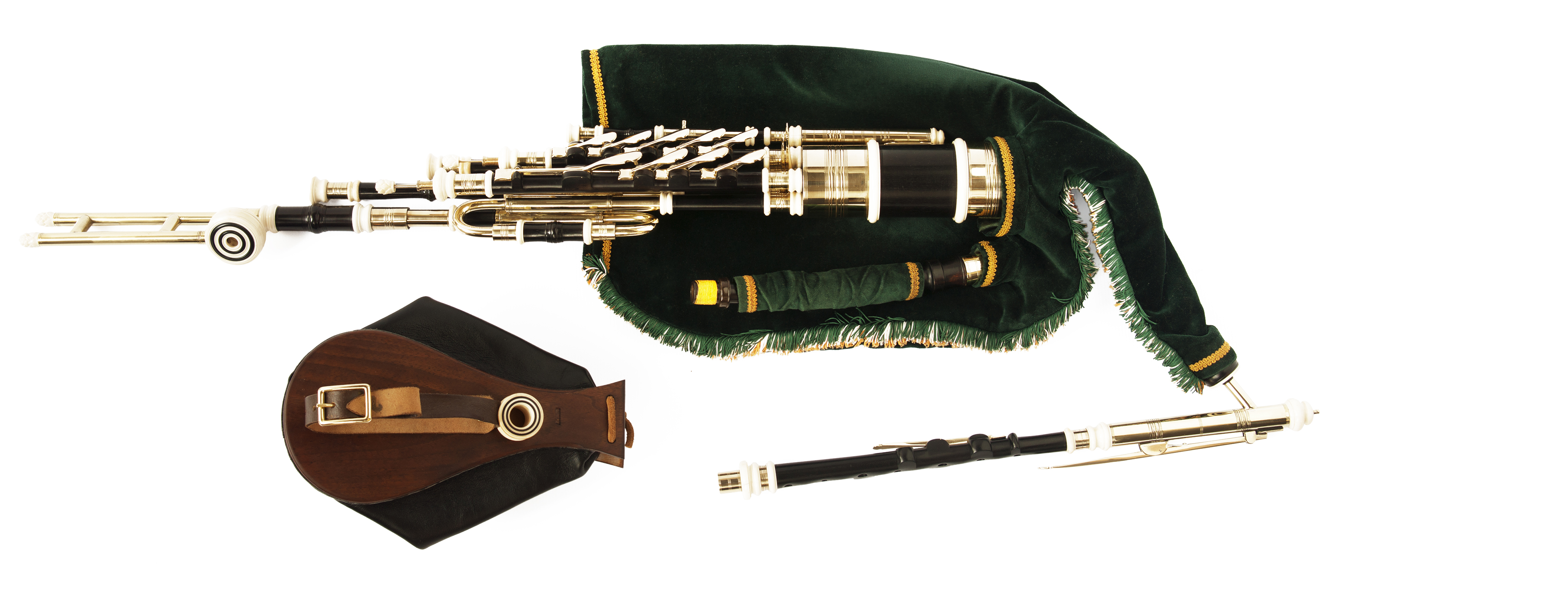
Filímeala Premuim model Uilleann pipes 3/4 set in D.
Blackwood, Bronze, Mammoth Ivory.
Video